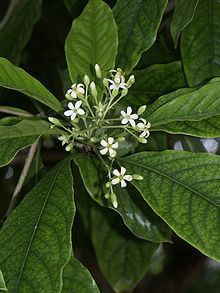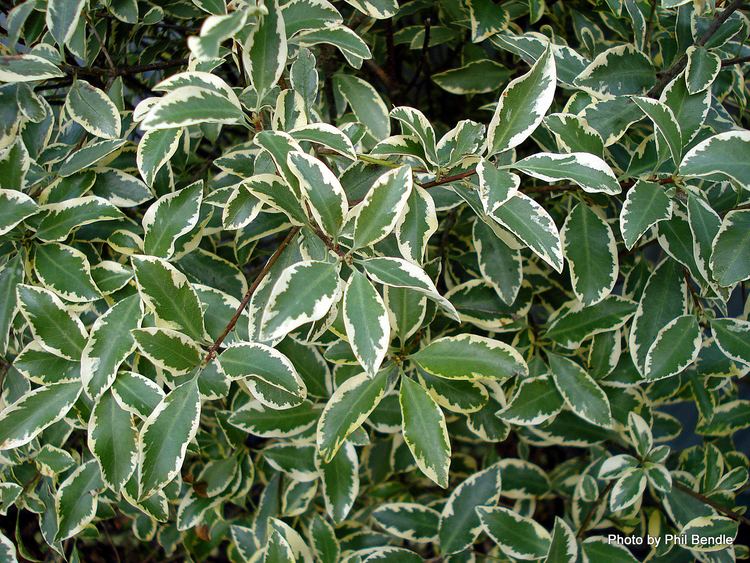Scientific name Pittosporum Rank Genus | ||
 | ||
Lower classifications Pittosporum tobira, Pittosporum tenuifolium, Pittosporum undulatum, Pittosporum eugenioides, Pittosporum crassifolium | ||
Plants growing needs growing variegated pittosporum plants
Pittosporum (/pᵻˈtɒspərəm/ or /ˌpɪtəˈspɔərəm, -toʊ-/) is a genus of about 200 species of flowering plants in the family Pittosporaceae. The genus is probably Gondwanan in origin; its present range extends from Australasia, Oceania, eastern Asia and some parts of Africa. Citriobatus is usually included here, but might be a distinct (though closely related) genus. They are commonly known as pittosporums or, more ambiguously, "cheesewoods".

The species are trees and shrubs growing to 2–30 m tall. The leaves are spirally arranged or whorled, simple, with an entire or waved (rarely lobed) margin. The flowers are produced singly or in umbels or corymbs, each flower with five sepals and five petals; they are often sweetly scented. The fruit is a woody seed capsule, which bursts on ripening to release the numerous seeds. The seeds are coated with a sticky resinous substance. The genus is named after their sticky seeds, from the Greek meaning "pitch-seed".

Tarata (P. eugenioides) and Kohuhu (P. tenuifolium) – both from New Zealand – and the Japanese cheesewood (P. tobira) from southern Japan are widely cultivated as ornamental plants in subtropical regions; pittosporums can also be grown indoors as bonsai. The petroleum nut (P. resiniferum) yields petroleum nut oil, which is sometimes proposed as biofuel; due to its excessive n-heptane content and consequent low octane rating, it is better suited as a source of n-heptane, which is otherwise produced from crude oil.

Many herbivores detest the resinuous pittosporums, in particular their seeds, which will stick anywhere. But some animals eat them with relish, for example the kea (Nestor notabilis), which likes P. anomalum fruit and seeds. The cottony cushion scale (Icerya purchasi) is a common pest on ornamental pittosporums (in particular the New Zealand species); the sac fungus Nectriella pironii often infects Japanese cheesewood.


